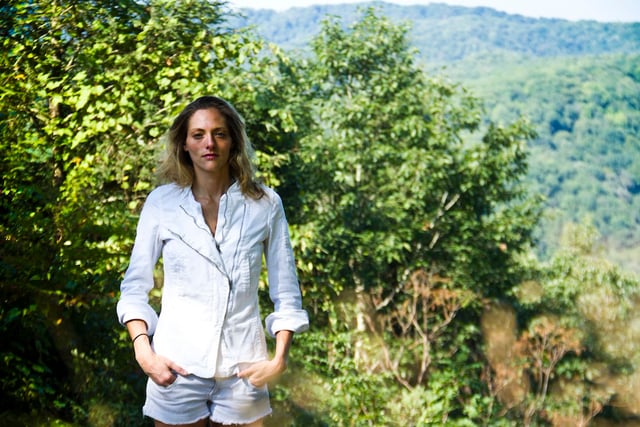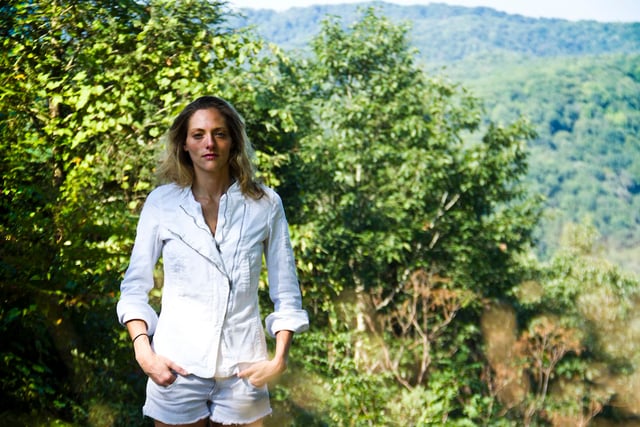 Photo by Lindsay Nohl.
Photo by Lindsay Nohl.
At NOLS Southwest, you might find a group of students trudging back to camp covered in dirt and mud, sporting multiple headlamps and huge grins. Students who match this description are probably returning from the two-week caving portion of their Semester in the Southwest, having experienced a whole new dimension of adventure.
Caving with NOLS is a fun way to get out of your comfort zone and into the learning zone. Before you head underground, you'll practice navigating these unique spaces above ground, working through obstacle courses that simulate some of the angles and spaces you’ll need to get through. This is to practice body awareness before entering the more sensitive cave environment. You might even shimmy underneath parked cars and practice rappelling skills using trees around camp.
 Photo by Lindsay Nohl.
Photo by Lindsay Nohl.By the time you get to the cave entrance, you will be prepared, but no doubt impressed, with the difference in environment. Caves have a beauty and mystery all their own. As you carefully pass hanging “soda straw” formations and delicate mud cracks, you'll rely on the body awareness you’ve been practicing to help you move around without damaging these incredible features.
You’ll adapt quickly to different methods of mobility, including crawling, climbing, walking, wiggling, and scooching to match the ever-changing horizontal and vertical terrain. Picture yourself fitting your body through a two-foot-tall opening, trying to position your helmet properly to light your path, all while trying not to touch the delicate features on either side.
Some of these moves can get a little uncomfortable and slightly humorous, but the reward of working through challenging, tight spaces is priceless when you discover grand, open rooms and cave formations called speleothems.
Dr. John Gookin, an experienced NOLS caving instructor and former curriculum and research manager, describes his love of the activity: “Caving is a fun, whole-person puzzle—figuring out how to go places and do things. It’s a 3-D maze, both mental and physical.”
 Photo by Lindsay Nohl.
Photo by Lindsay Nohl.Caving often challenges us to figure out how to get from here to there, and the answer isn’t always obvious. These types of “puzzles,” like descending 30 feet and getting across a large puddle with a limited amount of gear, encourage us to practice using creative problem-solving skills. A study presented at the 2014 National Recreation and Parks Association (NRPA) Leisure Research Symposium supports the idea that outdoor activities on NOLS semesters (like caving) promote improvement in thinking “creatively and contextually about problems in the world.”
As you learn to navigate this new world and solve problems creatively, you'll also learn about the intricacies of cave environments and Leave No Trace (LNT) practices so you can enjoy caves without damaging their delicate environments. You might even spot bats in hibernation and learn how to protect them from further spread of White Nose Syndrome. These LNT practices are a very important part of the course, as caves rarely recover from human disruption.
After two weeks of in-depth immersion in caves during the day and continued leadership development at camp in the evenings, you'll leave the caving section a better adventurer and better leader. You’ll return with the knowledge and competence you need to travel safely and responsibly through caves. You'll also gain a new set of leadership and problem-solving skills as well as stronger bonds with your coursemates.
Check out our Fall Semester in the Southwest to start your own caving adventure!
Related Posts
Six Reasons to Love the Southwest
Which NOLS Course Are You? [Quiz]
Why Getting Outside Is Good for Students
Written By
Sarah Zimmerman
Sarah Zimmerman works through words, images, events, and the outdoors. She has experience as a kayak instructor and an agency coordinator, and she loves to combine her passion for nature with her strategic marketing and PR skills. Sarah strives to create and share engaging, useful content while bringing people together for worthy causes.




